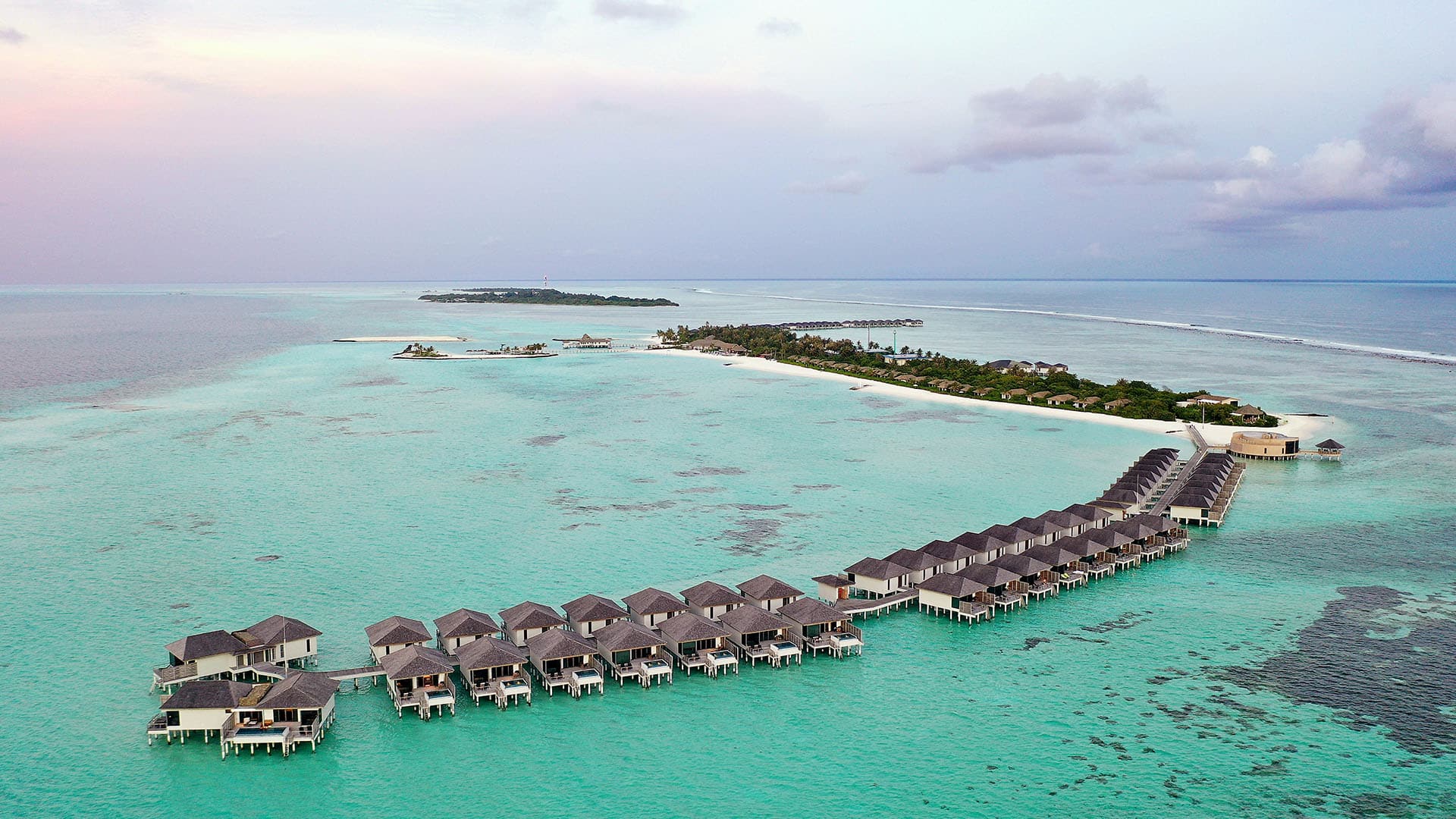When you build a resort on a one-kilometer island in the Maldives, how do you create a distinct luxury experience, without breaking the seamless connection with nature that brings travelers out to this remote destination in the first place?
Hamish learns how to pull off this balancing act from Dan Kridsada, who designed Le Meridien Resort and Spa, on Thilamaafushi Island in the Maldives. From the bold, Bauhaus-inspired guest rooms to the panoramic bar where travelers can watch the sun set over an infinite horizon — Dan explains the design choices that bring the most exquisite elements of the Maldives into this hotel, heightening the experience of being dropped onto an island in the Indian Ocean.
PODCAST TRANSCRIPT
Hamish: I wanna just start by appreciating what it’s like traveling to the Maldives. Cause from a traveler’s perspective, this truly is one of the most breathtaking journeys you could ever take, being quite literally dropped in the middle of the Indian Ocean.
Dan: The views are superb. Right? They’re brilliant.
Dan: You know, you definitely need the window seats.
Hamish: Mmm. My biggest advice to anyone traveling to the Maldives for the first time is to get a window seat as you, as you arrive into Malé. (Giggles)
Dan: For sure. So first thing you do, you get on the sea plane, you rush straight for the windows. Yeah. (Laughs with Hamish)
HAMISH: This is Travel by Design, where we chat with the visionaries behind the world’s most remarkable hotels. I’m your host, Hamish Kilburn, Editor of Hotel Designs.
HAMISH: And on today’s episode I’m speaking with Dan Kridsada.
Dan: I lead Bluette Design, and our main focus would be hospitality..
HAMISH: Dan designed Le Meridien Maldives Resort and Spa — on Thilamaafushi Island. It’s a one-kilometer-long stretch of coral reef, sand, and tropical greenery in the heart of the Maldives.
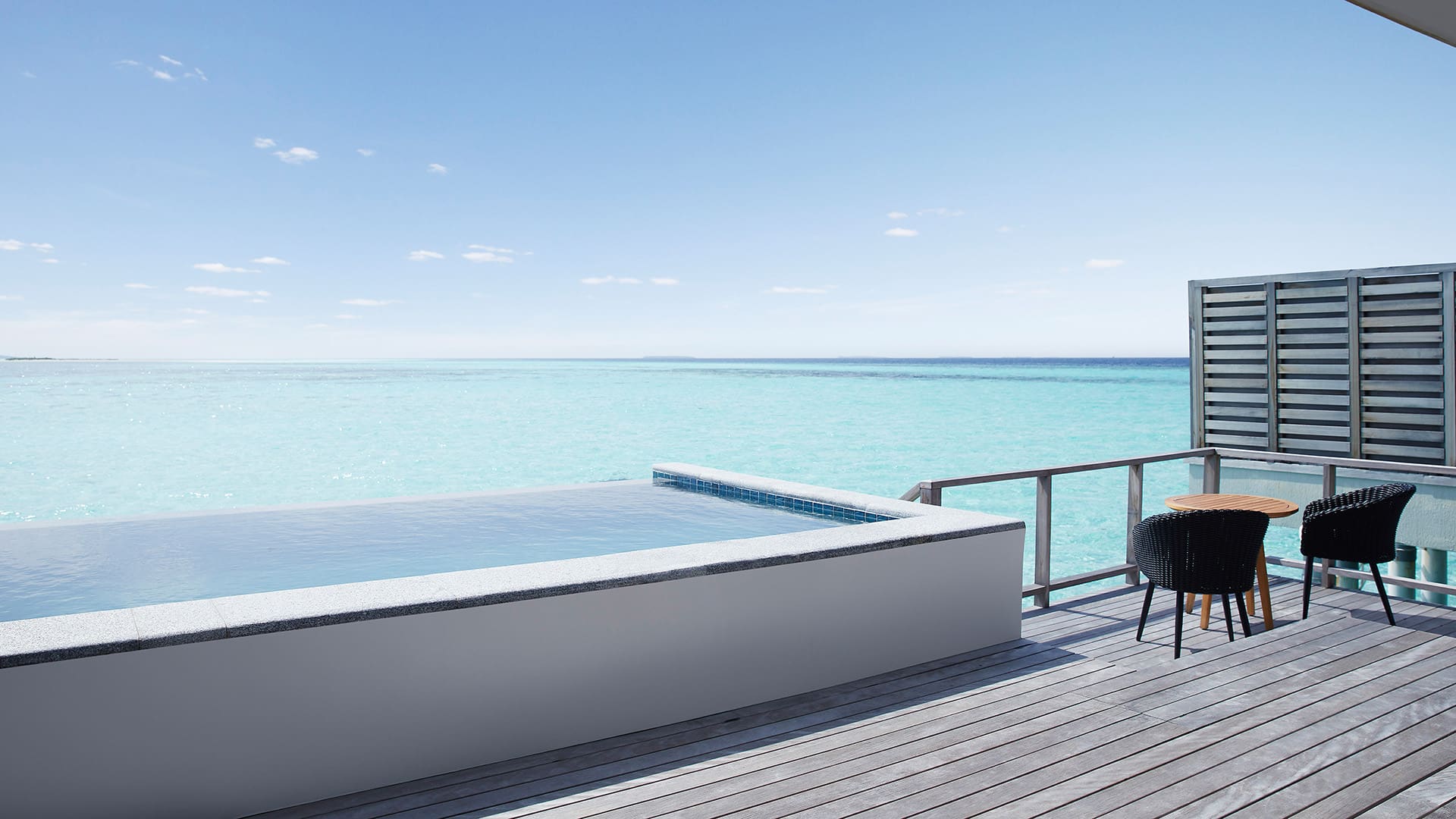
HAMISH: The most stunning feature of the hotel is the villas that sit directly on top of shimmering, iridescent waters. Every one of these overwater rooms has a view of the ocean horizon — and a ladder, so you can climb down into the lagoon for a swim.
HAMISH: But what caught my eye was the inside of these villas. Because they don’t just mirror the natural environment, or blend into the backdrop.
HAMISH: Instead, they have a bold, striking look — inspired by mid-century style, and fashion — which instantly sets these rooms apart from your typical beach resort.
HAMISH: I wanted to know how these villas could provide that luxurious flair… but without breaking the seamless connection with nature that makes the Maldives such a celebrated travel destination.
HAMISH: So I asked Dan to show me how he did it.
Hamish: Other island hotels that I’ve visited capture the reference from the local culture. For example, like the Caribbean.
Hamish: And in the Caribbean, every island has their own personality, and they, they really do.
Hamish: Would you say that’s the same with the Maldives?
Dan: Absolutely. I think with all projects, we try to give it a sense of place, and in this case, we dived straight in, into Maldivan heritage as a start, before we even got anywhere in terms of the design conceptualizing.
Dan: So that has always been the core notion, and we started branching out, and then that kind of brought us to multiple notes along the way, such as Bauhaus and mid-century elements…
Dan: The design still needed to maintain that sophistication, and it needed to be really proper and timeless, but at the same time, really sleek and fun at the same — you know?
Hamish: It’s really interesting you mentioned sophistication, because the first time I ever heard about the Maldives was when I was a young child. My parents went to the Maldives for their honeymoon.
Hamish: It wasn’t this luxury experience at the time. It was huts, and they would heat the water that they would need for the day above their huts.
Dan: Mm hmm (laughs)
Hamish: (Laughs) And I remember when they said, um, they got back on the plane after the holiday, and were just like, you know, really captivated by the hot water on the plane. It’s ridiculous. (Laughs)
Dan: Yeah. (Chuckles)
Hamish: But my experience was quite different.
I mean, staying in an overwater villa was something else for me. And it’s amazing how much a place can change in such a short period of time, would you say?
Dan: I would completely agree with you. I think the market has been really aggressive in the last decade, and I think it’s a trend that most travelers, you know, they appreciate good design, luxury design, not necessarily expensive design, if I may add? I think it’s the whole experience and the lifestyle that they’re trying to chase… living their dreams.
Hamish: I remember feeling totally at one with nature when I stayed. You know, in this setting. Your, your senses are completely heightened.
Hamish: And actually at night I realized that there’s no light pollution. You can really see the night sky in the Maldives; there’s nothing quite like it actually.
Dan: It’s superb.
Hamish: But also during the day, you know, hearing the sounds of, of waves crashing from the lagoon and underfoot and, and feeling that natural ocean breeze.
Hamish: So from a design perspective, how do you start designing an overwater villa when the outside, the landscape, the natural elements, are so powerful?
Dan: We had to look at it from a master plan point of view and not, you know, limiting the design to just a guest room as a typical guest room. And we just wanna see how we could actually make that stand out.
Dan: And I think we started to explore flipping the room inside out. You know, if you take a room and you take an envelope and you flip it inside out, there’s actually many things that actually surprise you.
Dan: So our, our canvas was pretty much infinite. It includes the horizon, and how do we draw all these elements back into the room itself?
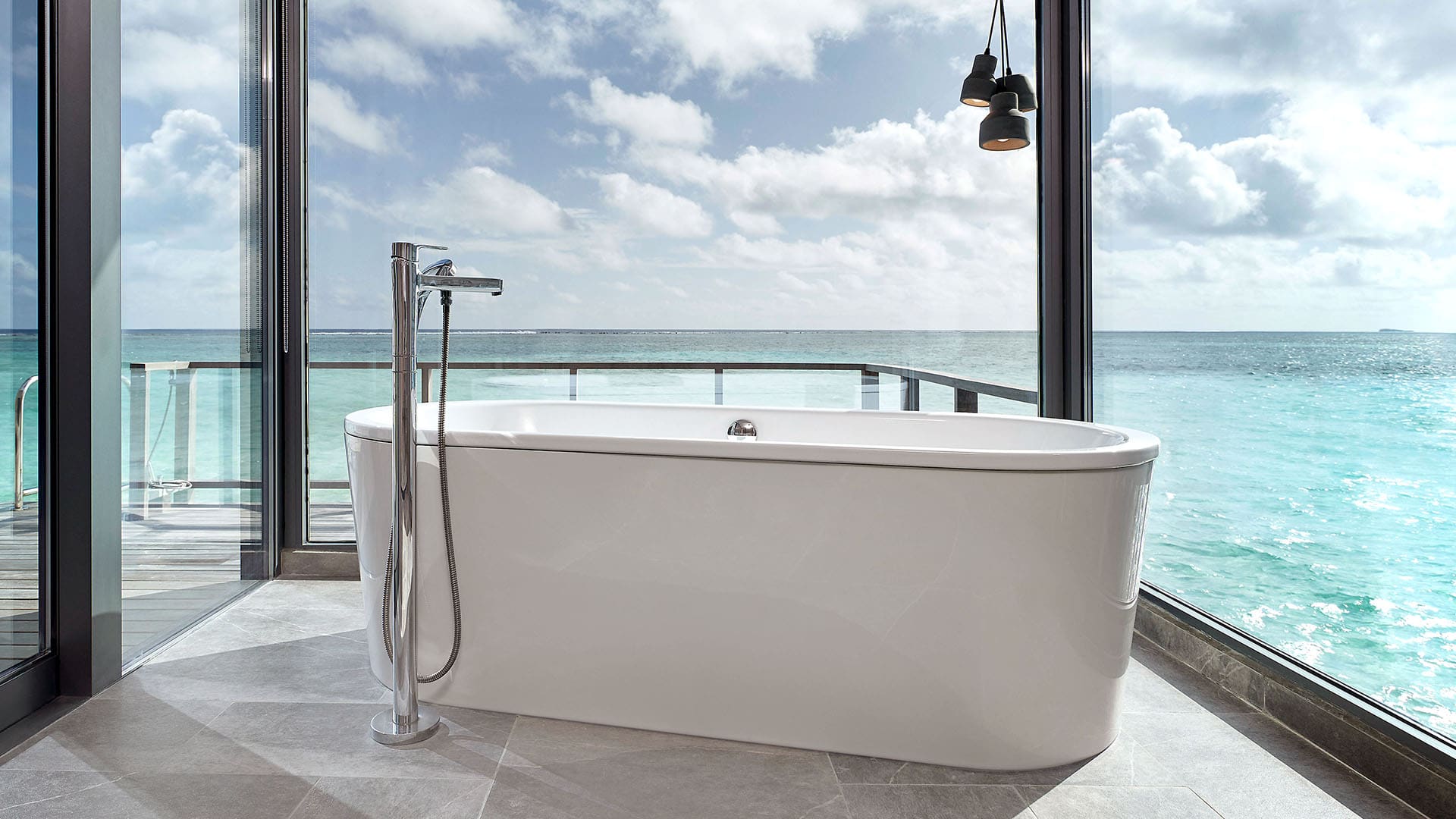
Dan: So I think an example of how we did this was to place a freestanding bathtub. That had panoramic views to the Indian Ocean. And that actually allowed the guests to be drawn, um, to almost an infinite interaction.
Hamish: I find it really fascinating you mention the envelope. You know, ’cause I think that from the furniture specifically, if you replace what’s indoors and outdoors with each other, you wouldn’t find any different. ‘Cause it, that’s, the feeling, you’ve created that indoor-outdoor connection. What, what were your decisions there?
Dan: We tried to create an environment where guests would not feel too confined. So, the bathtub was an example. We also punched out a louvered window, a take on French architecture. So we punched it out and this kind of created a conversational space between the bedroom and the bathroom.
Dan: So, irregardless of where you would be, in the guest room itself, you would be able to see your partner, your family, you know, to have conversations and, you know, even to take a photo.
Hamish: I wanna take you back to the bath, because I think a lot of people associate a bath with luxury these days, especially when you look at, you know, large cities, everything’s being condensed. The beauty of a place like the Maldives is that you have the luxury of space.
Hamish: How much of an emphasis did you put on the bathroom in terms of wellness and overall experience? In those villas specifically?
Dan: It was definitely a key factor when we were designing our room. I think it wasn’t just your typical space planning. We sought out to see how we could allow that infinite view to come through and just kind of capture your heart. Even if you’re at your vanity, you’re just doing your makeup or you know, just doing up your hair for dinner perhaps?
Dan: But to be able to just turn your head and just feel that, you know, the world is actually not that big, almost in a unusual sense… because you’re just looking out and that’s the ocean right next to you.
Hamish: The other thing I find quite comical is how quickly you become accustomed to that.
Dan: Yeah.
Hamish: How quickly you become accustomed to it. You know, you feel like all of a sudden it is a day’s gone by and you’re like, “Yep, this is my villa.” (Laughs)
Dan: It’s crazy. Uh, a hundred percent. Yeah. It’s —
Hamish: But it’s, it makes me feel like we as human beings need that connection with nature more than we realize.
Dan: We do, We do. I mean, apart from the fact that we’re trying to create a guest experience, I think it allows for guests not just to appreciate good design, good luxury design, but also to take some time to reflect.
Dan: I think it gives you that, that true experience to live outside your room. (Laughs softly to himself) Yeah… Yeah.
Hamish: You know, thinking back to my parents’ Maldives experience, they stayed in rustic huts, with no separation whatsoever between the guest and the natural setting.
Hamish: Whereas you’ve kept the connection with nature. But at the same time, you’re not just, you know, exposing guests to the natural elements.
Dan:Yeah, and, you know, it’s —
Hamish: So it’s that balance, isn’t it?
Dan: Yeah. It’s that balance.
Hamish: It — you know what, it surprised me that you chose Bauhaus as a main reference point in interior design.
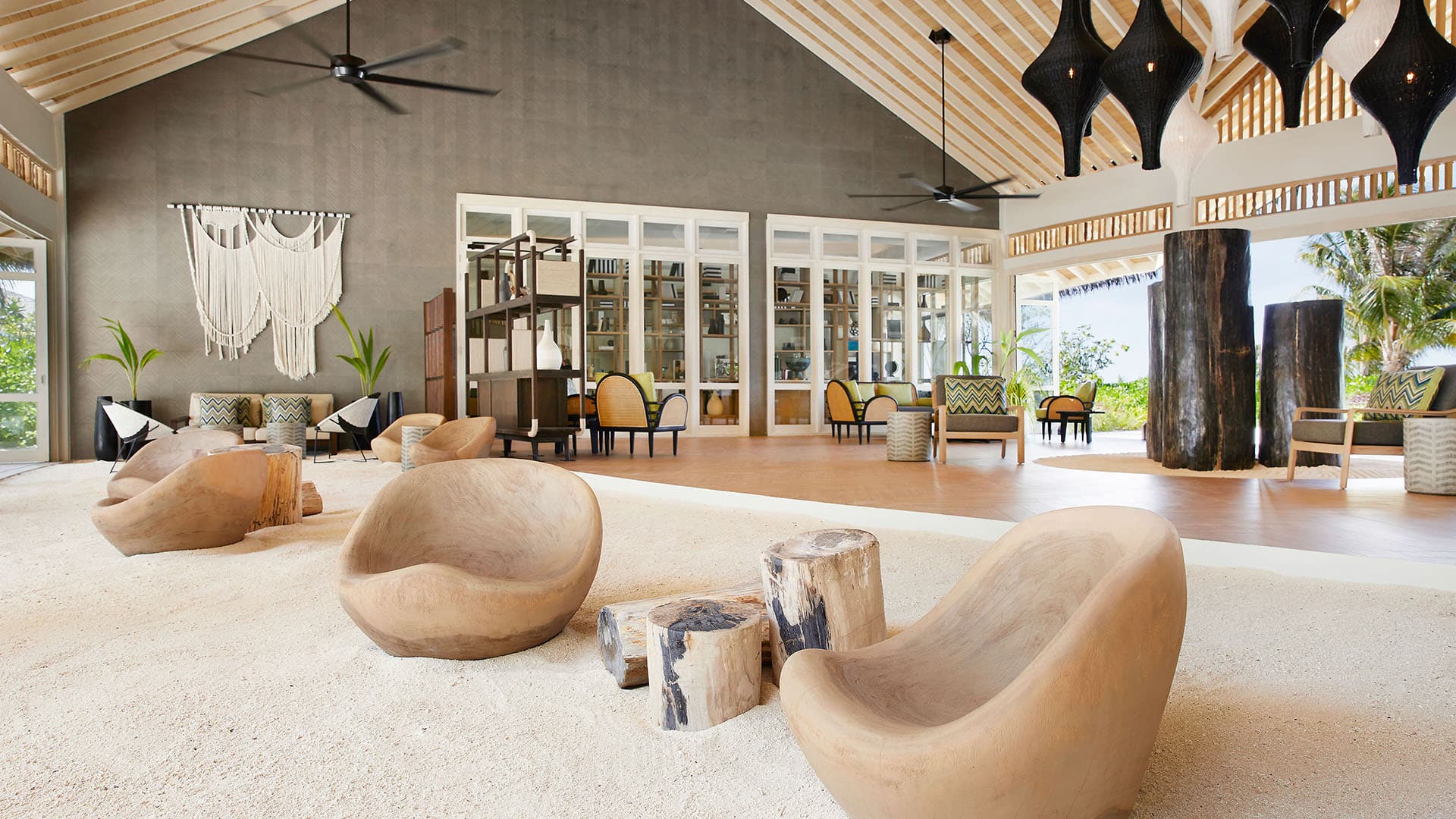
Hamish: So for those who don’t, are aren’t familiar with Bauhaus — think of, you know, simple geometric patterns to frame a room. As opposed to, essentially in this case, in the Maldives, having kind of a bare, neutral look, that really kinds of reflects nature, and kind of reflects, like, the landscape around.
Hamish: Bauhaus is quite bold. I dunno, I wouldn’t expect to see that referenced in the Maldives.
Dan: You’re not wrong to say that. Um, ’cause Maldives —
Hamish: (Laughs)
Dan: Maldives and Germany, well, it’s complete opposite poles, right?
Hamish: Yeah. You just think shipwreck chic. That’s what I think when I think Maldives. But I love it when brands really challenge that. And I feel like this hotel really has done that.
Dan: It’s a really strong element that evokes lifestyle and really well curated and original furniture pieces. So this kind of creates this really holistic form of a spatial experience.
Hamish: Also, it’s, uh, giving guests what they wouldn’t expect, but in a way that doesn’t feel too intrusive.
Hamish: And, and those kind of references to Bauhaus, it’s a really nice way to familiarize the spaces, maybe?
Dan: It is, and the patterns that we use, it’s almost a subconscious draw on Maldivan patterns. It’s not quite literal, that’s why we headed towards, uh, this iconic and original designs, that seemed to make Bauhaus and Maldives work.
Dan: The overall design approach is to create something that is timeless and contemporary at the same time…
Hamish: That’s really hard.
Dan: Yeah.
Hamish: Contemporary and timeless. ‘Cause contemporary is about fashion, is about, you know, being in the moment, feeling interesting. But then it also has to be timeless because it has to, you know, have longevity. How did you do that? (Laughs)
Dan: A hundred percent. And it comes back to fashion and Bauhaus.
Dan: So if I hone in on fashion, I think it was Le Meridien being such a iconic French brand, given its history. I think it just led us along that path, to try to see what we could actually draw, from not just future trends of fashion, but I think the history of fashion.
Hamish: So then I’m really interested to understand, how is fashion explored in the history? What major elements sort of really do reference fashion?
Dan: We looked at, uh, Vogue editorials, which I think that probably started way early in the century, so that gave us inspiration… um, pretty much the fun bits (laughs) that we, that we wanted to, to draw from there.
Dan: Definitely how chic it was back then, how certain posters or photographs were created, how certain colors were used…
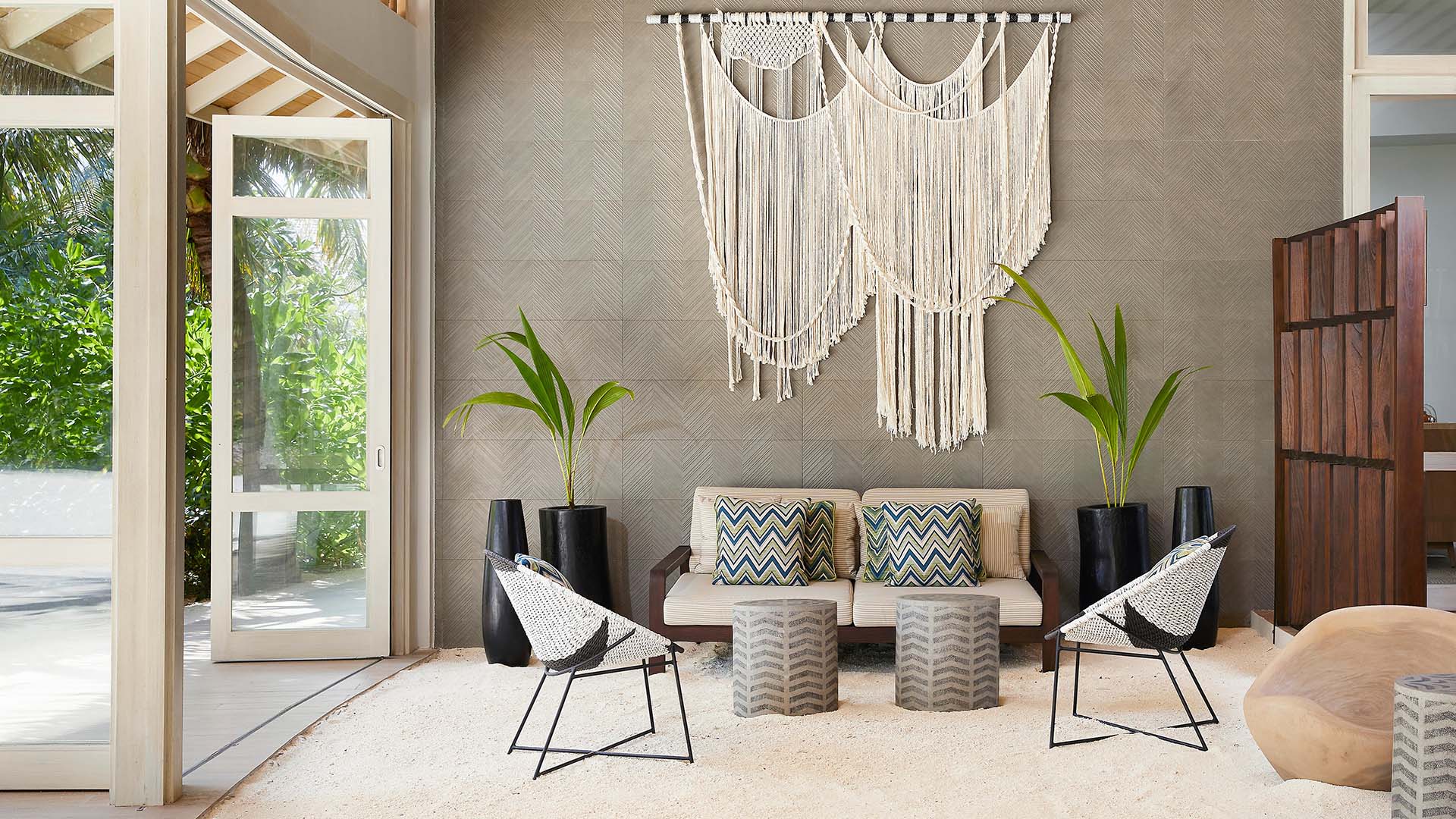
Hamish: I feel like you’ve captured the glamorous era of travel within the design, and that’s perhaps what you were trying to create, when looking through those Vogue editorials and how things were created back then, it was kind of a prestigiousness to it, without feeling pretentious.
Dan: Exactly. That is exactly what we tried to recreate, you know, the… the special experience of air travel.
Dan: And I think back in the day, um, air travel was not that easily accessible as it is today. I think we all know that.
Dan: Back then, I think it was super glamorous, as you mentioned earlier, to just jetset, go to a really nice place, go on a holiday. And it was the glamorous days that we tried to recreate in a modern day and to see how we could replicate that. Yeah, into the property itself.
Hamish: And, and why not? Just because travel is so much more accessible now than ever before, doesn’t mean it can’t be special.
Dan: Exactly.
Hamish: I just wanna touch upon — sustainability is such a, a big issue in the Maldives. I mean, do you find it difficult to source material that hits that environmental standard, but also because obviously all the other designers on the other islands are kind of using the same materials, ’cause they’re limited as to what they can use, how do you therefore ensure that that’s placed with personality in a unique setting, compared to it, you know, just feeling the same as all the other islands?
Dan: Right. I think first of all, we always try to produce original design pieces, and I’m sure it’s the same with the other islands.
Dan: I would say the consideration for us was to look ten, twenty years ahead. To understand how a specific material would age. As opposed to how it will last a year.
Dan: For our finishes, we always try to give it a exposed, textured finish, almost a raw feel. So you really would get your palms in and get that good grip of that natural wood. And also, that is to allow the wood to breathe itself, so it will age in a comfortable manner…
Dan: So we always had that at the back of our head: one year down the road, two years down the road, how is this furniture, how is this wood piece gonna evolve? It should start to look better as it goes on, right?
Hamish: Yeah, you’ve really hit the nail on the head there, with the furniture, and how things evolve and change. It doesn’t have to be so perfect, and I think that’s the new luxury, in a way.
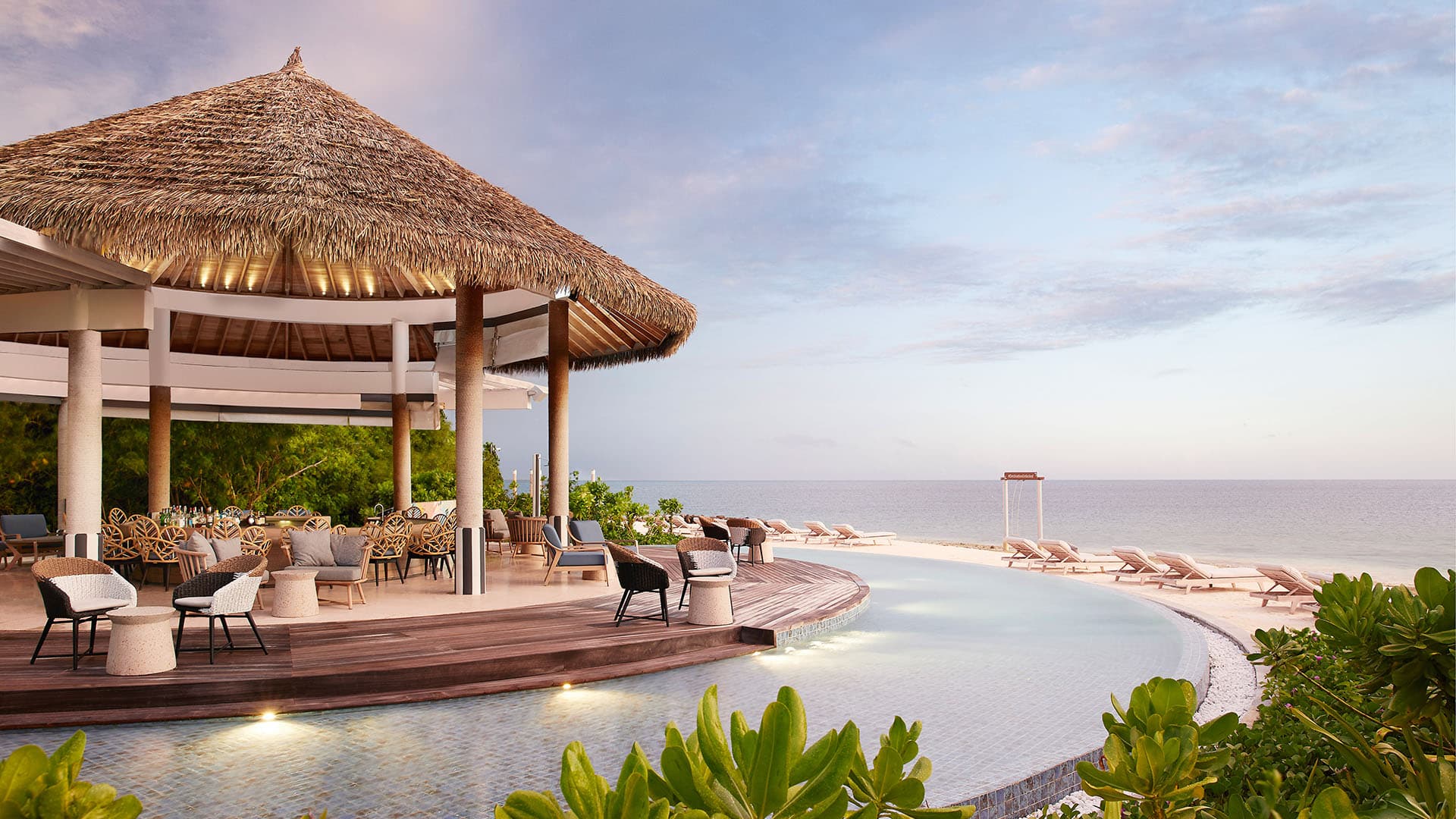
Hamish: You spoke to me a lot about bringing the, the outdoors into the villas. But I’d love to know more about the public areas that are actually outside.
Hamish: I’m talking about one spot in particular, the, the Riviera — that’s the pool and bar, that’s perched on the western tip of the island.
Hamish:Which, let’s face, it Dan… is just the perfect spot to watch the sun set.
Dan: Yeah. (Laughs)
Dan: This whole approach that we had with Riviera, was similar to many of the overwater villas in this sense, because it had a panoramic view.
Dan: So again, we use an infinite canvas for this and we just had to take Riviera on board with what the ocean had to offer. It’s not so much Riviera standing apart on its own, but it’s more like what we could actually draw back to the building itself, the architecture itself —
Hamish: That panoramic view is so key, you know, the fact that you have a circular bar — so that means you walk up, you grab a cocktail, kick back with the other travelers…
Hamish: But you never lose sight of the lagoon, or the forested canopies, you know, all the layers that make up the Maldives.
Dan: And I think we try to bring in other forms of colors in terms of a really rich terrazzo flooring. So that, again, is a take on mid-century. We brought in a lot of art deco sculptural pieces around there and we tried to strategically style this around the bar itself as well.
Dan: And everything around the space is really just addressing what the ocean had to offer. It’s the entire composition of not just the bar itself, but also I think the people around mingling and socializing, I think against the backdrop of the vast ocean…
Dan: And this actually allowed us to create this kind of, almost a dramatic setting.
Hamish: Especially when there’s no walls in these public areas. I mean, they’re literally, you know, open air spaces. They have to work harder in order to create that residential feel, I believe for the traveler.
Dan: Something that was a really strong factor, was, uh, the use of wall murals. So the wall murals are placed, uh, strategically around, around the island itself…
Dan: In this case, for the Riviera, we had, you know, artists fly in to create these really striking colors, uh, on the wall murals, just to create that palette.
Dan: And we use the backdrop of the neutral palettes of the earthy forests to almost feature a celebration of this magnificent, uh, sunset bar.
Hamish: Especially after a day of walking around the island, snorkeling along the coral reef, there’s just nothing like lying back on a lounge chair, watching that moment where the sun dips under the horizon…
Hamish: It’s kind of unreal, right? Like, those last rays of daylight, these beams of red and orange and yellow, just shoot out above the water.
Dan: Yeah, a hundred percent, yeah.
Hamish: I’ve heard people refer to that view as, as watching “God’s Fingers”?
Dan: I love how you use it as an analogy, “God’s Fingers.” That’s, that’s really cool. (Laughs)
Hamish: (Laughs)
Dan: Yeah. So, yeah, a hundred percent. Yeah.
Hamish: It just, it just lights up the sky.
Dan: It does, it does. And it, it’s popped in, in such a comfortable spot of the island where you almost, again, you have to journey around the island before you, you, chance upon it.
Dan: And with that, I think we were able to ignite the space.
MUX: Outro Begins
Hamish: Dan, it’s been such a pleasure speaking to you.
Hamish: Such a pleasure. Thank you so, so much for giving us a real insight into this project and how it all came about. It’s been fabulous. Thank you.
Dan: Thanks Hamish, it was an exciting experience for me to be on the show and to be able to share our vision, our design. It was a pleasure. Thank you so much.
CREDITS
HAMISH: Travel by Design is a podcast by Marriott Bonvoy Traveler, the online travel magazine where you’ll find more inspiring hotel design stories.
If you’re curious about the craft of hotel design, then check out marriottbonvoy.com/travelbydesign.
This episode was produced by Narratively Creative. Our Lead Producers are Theresa Avila and James Boo. Our Associate Producer is Monica Hunter-Hart. Story edits by Priscilla Alabi, sound design by Dennis Funk and James Boo — and audio engineering by Dorian Love.
Our Marriott Bonvoy Traveler producers are Jess Moss and Robin Bennefield.
Special thanks to Dan Kridsada from Bluette Design, for speaking with me about his work on Le Meridien Maldives Resort and Spa.
I’m your host, Hamish Kilburn. Don’t forget to subscribe to Travel by Design wherever you get your podcasts. And tune in next time to hear more design stories behind the world’s most fascinating hotels.
